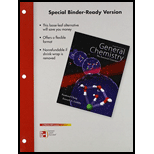
Interpretation:
The velocity (in
Concept Introduction:
The speed, wavelength and frequency of a wave are interrelated by
The photoelectric effect was not explained by the wave theory of light which is associated with the energy of light to its intensity. Einstein prepared a best guess. He suggested that a beam of light is a stream of particles. These “particles” are known as photons. Einstein worked out that each photon should possess some energy
Where,
Where,
From this equation, when the photon is more energetic (i.e., the higher its frequency), the kinetic energy of the ejected electron is larger. If the frequency of light is below the threshold frequency, the photon moves away from the surface and no electrons will be ejected. If the frequency is equal to the threshold frequency, it removes the most loosely attached electron. If the frequency is above the threshold frequency, it will not only remove the electron, but also require certain kinetic energy to the ejected electron.
To calculate: Calculate the velocity (in
Want to see the full answer?
Check out a sample textbook solution
Chapter 7 Solutions
Loose Leaf For General Chemistry With Connect Access Card
 ChemistryChemistryISBN:9781305957404Author:Steven S. Zumdahl, Susan A. Zumdahl, Donald J. DeCostePublisher:Cengage Learning
ChemistryChemistryISBN:9781305957404Author:Steven S. Zumdahl, Susan A. Zumdahl, Donald J. DeCostePublisher:Cengage Learning ChemistryChemistryISBN:9781259911156Author:Raymond Chang Dr., Jason Overby ProfessorPublisher:McGraw-Hill Education
ChemistryChemistryISBN:9781259911156Author:Raymond Chang Dr., Jason Overby ProfessorPublisher:McGraw-Hill Education Principles of Instrumental AnalysisChemistryISBN:9781305577213Author:Douglas A. Skoog, F. James Holler, Stanley R. CrouchPublisher:Cengage Learning
Principles of Instrumental AnalysisChemistryISBN:9781305577213Author:Douglas A. Skoog, F. James Holler, Stanley R. CrouchPublisher:Cengage Learning Organic ChemistryChemistryISBN:9780078021558Author:Janice Gorzynski Smith Dr.Publisher:McGraw-Hill Education
Organic ChemistryChemistryISBN:9780078021558Author:Janice Gorzynski Smith Dr.Publisher:McGraw-Hill Education Chemistry: Principles and ReactionsChemistryISBN:9781305079373Author:William L. Masterton, Cecile N. HurleyPublisher:Cengage Learning
Chemistry: Principles and ReactionsChemistryISBN:9781305079373Author:William L. Masterton, Cecile N. HurleyPublisher:Cengage Learning Elementary Principles of Chemical Processes, Bind...ChemistryISBN:9781118431221Author:Richard M. Felder, Ronald W. Rousseau, Lisa G. BullardPublisher:WILEY
Elementary Principles of Chemical Processes, Bind...ChemistryISBN:9781118431221Author:Richard M. Felder, Ronald W. Rousseau, Lisa G. BullardPublisher:WILEY





